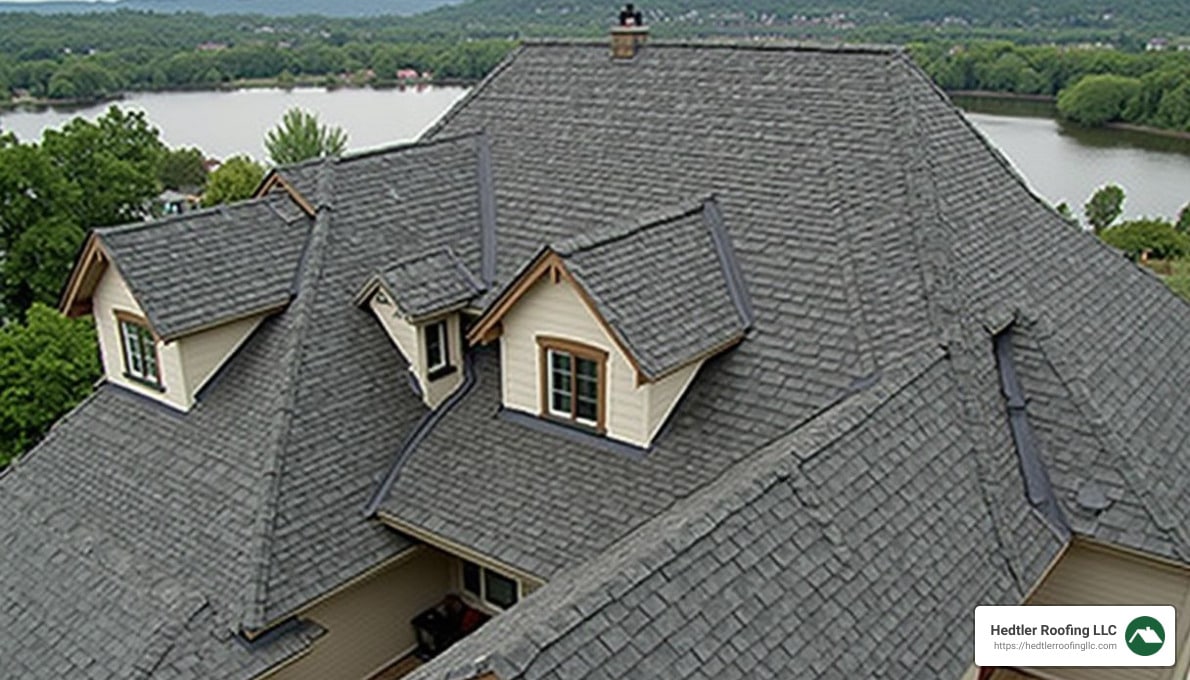Residential Roof Installation: Top 7 Expert Tips 2024
Why Residential Roof Installation Matters
Residential roof installation is a critical project for any homeowner. It not only improves the appearance of your home but also ensures protection against the elements. For those in Massachusetts, dealing with severe weather like heavy snow or strong winds, having a reliable roof is essential. Here are the basics you need to consider:
- Inspection: Before starting, inspect your roof for damage and determine if replacement is necessary.
- Materials: Choose the right materials such as asphalt shingles or metal roofing based on your home’s needs.
- Safety: Ensure proper safety measures like fall protection and non-slip shoes to prevent accidents.
I’m Jason Hedtler, owner of Roof Experts. With over 20 years of hands-on experience, I specialize in residential roof installation custom to meet the unique needs of Massachusetts homeowners. My commitment is to provide top-quality roofing solutions that stand the test of time.

Residential roof installation word list:
– roofer service
– roof maintenance services
Assessing Your Roof
Before diving into a residential roof installation, it’s crucial to assess your existing roof. This involves a thorough inspection, understanding the extent of any damage, estimating the remaining lifespan, and obtaining necessary permits. Let’s break it down.
Inspection
Regular inspections are key to maintaining your roof’s integrity. Here’s how to conduct a thorough inspection:
- Visual Inspection: Start by examining your roof from the ground. Look for signs of sagging, aging, or visible damage like missing shingles.
- Close-Up Inspection: Safely use a ladder to get a closer look. Check for cracked, curled, or missing shingles. Pay special attention to areas around chimneys, vents, and skylights.
- Interior Check: From inside your home, inspect your attic during daylight hours. Light coming through indicates holes or cracks. Also, look for stains or streaks on the underside of the roof, which suggest water damage.
Identifying Damage
Certain areas of your roof are more prone to damage:
- Valleys and Ridges: These high-stress areas where two roof planes meet are susceptible to leaks.
- Eaves and Overhangs: These areas can suffer from ice damming in the winter, which can lift shingles and cause leaks.
- Flashings: These metal pieces cover transitions and can be the first to fail if not properly installed or maintained.

Lifespan
Knowing the lifespan of your roofing materials helps you plan for a replacement. Here are some common materials and their life expectancies:
- Asphalt Shingles: 20-25 years
- Metal Roofs: 50-75 years
- Wood Shingles: 20-25 years
- Rubber Roofs: 30-50 years
Most contractors recommend replacing materials at around 80-85% of the roof’s life. For example, consider replacing a 25-year roof around the 20-year mark to avoid running the risk of replacing it too late.
Permits
Before starting your project, check local regulations. You’ll likely need a building permit. This ensures your roof meets all local codes, which vary by region and climatic zone. Permits are essential for:
- Tearing off the old roof: Some areas require you to remove old shingles before installing new ones.
- Installing new materials: Ensure the materials you choose are approved for use in your area.
- Making structural changes: If your roof structure needs reinforcement, a permit will be required.
By conducting a thorough inspection, identifying vulnerable areas, understanding the lifespan of materials, and obtaining the necessary permits, you set the stage for a successful residential roof installation.
Next, we’ll cover how to prepare for your roofing project, including safety precautions, tools, and materials needed.
Preparing for Residential Roof Installation
Before starting your residential roof installation, preparation is key. This includes taking safety precautions, gathering the right tools and materials, and considering weather conditions. Let’s dive in.
Safety Precautions
Safety should be your top priority. Here are some essential precautions:
- Fall Protection: Always use a safety harness secured to an anchor point. Falls from roofs can be fatal.
- Rubber-Soled Shoes: These provide better grip and prevent slipping.
- Hard Hats: Protect your head from falling debris.
Pro Tip: Never work alone. Having a partner increases safety and efficiency.
Tools Required
Having the right tools makes the job easier and safer. Here’s a list of essential tools:
- Broom: To keep the work area clean.
- Caulk Gun: For applying sealants.
- Chalk Line: For straight lines.
- Circular Saw: For cutting decking and shingles.
- Drill/Driver: For screws and fasteners.
- Extension Ladder: To safely reach the roof.
- Hammer: For nailing.
- Pry Bar: For removing old shingles.
- Roofing Nailer: Speeds up the nailing process.
- Roofing Tear-Off Shovel: For removing old shingles.
- Stapler: For securing underlayment.
- Tape Measure: For precise measurements.
- Tin Snips: For cutting flashing.
- Utility Knife: For cutting shingles and underlayment.
- Work Gloves: To protect your hands.
Materials Required
Gathering all necessary materials beforehand ensures a smooth workflow. Here’s what you’ll need:
- Screws: For securing decking and other components.
- Roofing Nails: Typically 1-1/4 inches, for securing shingles and underlayment.
- Felt Paper: Underlayment that provides a moisture barrier.
- Asphalt Shingles: The primary roofing material.
- Clear Sealant: For sealing around vents and flashing.
- Drip Edge Flashing: To direct water away from the fascia.
- Tarps: To protect landscaping and catch debris.
- Roof Sealant: For sealing nail heads and flashing.
- Self-Stick Underlayment: Also known as ice barrier, for added protection.
- Staples: For securing underlayment.
- Step Flashing: For areas where the roof meets a wall.
- Valley Flashing: For roof valleys.
- Vents and Skylights: If needed for your project.
Weather Conditions
Timing your project with favorable weather conditions can make a significant difference.
- Ideal Weather: Aim for dry, mild days. Early spring and fall are usually the best times in Massachusetts.
- Avoid Extremes: Avoid very hot or cold days. Extreme temperatures can affect materials and make the work more difficult.
- Monitor Forecasts: Keep an eye on weather forecasts to avoid unexpected rain or storms during the installation process.
By prioritizing safety, gathering the right tools and materials, and considering the weather, you can set the stage for a successful residential roof installation.
Next, we’ll cover the step-by-step process of tearing off the old roof, repairing the decking, and installing new materials.
Step-by-Step Residential Roof Installation
Tear Off the Old Roof
The first step in any residential roof installation is to remove the old roof. This process is known as “tear-off.”
- Prepare the Area: Lay tarps around your home to catch debris and protect landscaping. Move outdoor furniture and valuables away from the house.
- Start at the Top: Use a roofing tear-off shovel or pry bar to remove the old shingles, starting at the ridge and working your way down.
- Dispose of Debris: Rent a dumpster to collect old shingles and other materials. This keeps the work area clean and saves you multiple trips to the dump.

Pro Tip: Remove all old nails or pound them flat to prevent tearing the new shingles.
Repair the Decking
Once the old roofing is removed, inspect the roof decking (also known as sheathing).
- Check for Damage: Look for water stains, rot, or cracks. Damaged decking must be replaced to ensure a solid foundation.
- Cut and Replace: Use a circular saw to cut out damaged sections. Replace with new plywood or OSB of the same thickness, securing it with screws or nails.
- Clean Up: Sweep the decking clean with a broom to remove any debris.
Install Underlayment and Drip Edge
Underlayment is crucial for protecting your roof deck from water damage.
- Lay Felt Paper: Start at the eaves and work upward, overlapping each row by at least 4 inches. Use staples or roofing nails to secure it.
- Install Ice Barrier: In areas with snow and ice, apply a self-stick underlayment on the lower section of the roof. This prevents water from melted snow and ice from leaking under the shingles.
- Add Drip Edge: Install drip edge flashing along the eaves before laying the underlayment. Fasten with roofing nails every 2 feet.

Install Flashing
Flashing prevents water from seeping into joints and valleys.
- Valley Flashing: Lay metal flashing in valleys where two roof planes meet. Secure it with roofing nails along the edges.
- Step Flashing: Use step flashing where the roof meets a wall or dormer. Nail it at the top edge, covering each nail with the next piece of flashing.
- Dormer Flashing: Apply flashing around dormers to ensure these areas are watertight.
Lay Shingles
Now it’s time to install the shingles.
- Starter Shingles: Begin with a row of starter shingles along the eaves. These help seal the roof edge and prevent water leaks.
- Nailing: Use 1-1/4-inch zinc-coated roofing nails. Place them above the adhesive strip, ensuring they go through the shingle and into the roof deck.
- Stagger Pattern: Offset each row by 6 inches to avoid lined-up seams. This creates a stronger, more watertight roof.
Cap the Ridge
The final step is to install the ridge cap shingles.
- Ridge Cap Shingles: Use the tabs cut from regular shingles or special ridge cap shingles. Fold them over the ridge and nail them down.
- Longer Nails: Use longer roofing nails to ensure they penetrate both the ridge cap and the roof deck.
- Seal Exposed Nails: Apply roofing sealant to the heads of exposed nails to create a waterproof seal.
By following these steps, you can ensure a successful residential roof installation that will stand the test of time. Next, we’ll explore the different types of roofing materials you can choose for your project.
Common Roofing Materials
When it comes to residential roof installation, selecting the right material is crucial. Each type of roofing material offers unique benefits and challenges. Let’s explore the most popular options: asphalt shingles, metal roofing, cedar shake, synthetic roofing, and slate roofing.
Asphalt Shingles
Asphalt shingles are the most common roofing material in the U.S.
Pros:
– Cost: Highly economical, with prices ranging from $425 to $825 per roofing square.
– Lifespan: Typically lasts 20-30 years.
– Installation: Easy to install, making it ideal for DIY projects.
– Durability: Performs well in extreme temperatures and weather conditions.
Cons:
– Lifespan: Shorter compared to other materials.
– Weather Sensitivity: Can be damaged by severe weather like heavy snow or hail.
Metal Roofing
Metal roofing is gaining popularity due to its longevity and energy efficiency.
Pros:
– Durability: Can last 40-70+ years.
– Energy Efficiency: Reflects solar heat, reducing cooling costs.
– Modern Appearance: Offers a sleek, contemporary look.
Cons:
– Cost: Higher upfront costs, ranging from $1,038 to $1,828 per roofing square.
– Noise: Can be noisier during rain or hail unless properly insulated.
Cedar Shake
Cedar shake offers a natural, rustic look.
Pros:
– Aesthetic: Provides a traditional, charming appearance.
– Lifespan: Lasts around 20-30 years with proper maintenance.
– Insulation: Natural insulation properties help with energy efficiency.
Cons:
– Maintenance: Requires regular upkeep to prevent rot and insect damage.
– Cost: More expensive than asphalt shingles.
Synthetic Roofing
Synthetic roofing materials are designed to mimic natural products like slate and wood.
Pros:
– Cost: Generally less expensive than natural materials.
– Durability: Long-lasting and resistant to weather conditions.
– Installation: Easier to install than natural materials.
Cons:
– Aesthetic: May not have the same authentic look as natural materials.
– Environmental Impact: Some synthetic materials are not biodegradable.
Slate Roofing
Slate roofing is known for its durability and aesthetic appeal.
Pros:
– Lifespan: Can last 75-200 years, making it a lifetime investment.
– Durability: Highly resistant to fire and extreme weather.
– Aesthetic: Adds a distinctive, high-end look to your home.
Cons:
– Cost: One of the most expensive roofing materials, ranging from $756 to $1,870 per roofing square.
– Weight: Very heavy, requiring additional structural support.
– Installation: Requires specialized skills, increasing labor costs.
Choosing the right roofing material is essential for the longevity and performance of your roof. Up next, we’ll answer some frequently asked questions about residential roof installation to help you make an informed decision.
Frequently Asked Questions about Residential Roof Installation
How Much Does It Cost to Install a Roof?
The cost to install a new roof can vary widely based on several factors. The national average cost to replace a roof is around $8,000, with most homeowners spending between $5,500 and $11,000. However, high-end materials like metal or slate can push costs up to $46,000 for an extensive replacement.
Factors Affecting Cost:
– Labor: This is a significant portion of the cost, accounting for about 60%. DIY can save on labor but requires skill and time.
– Materials: The remaining 40% of the cost is for materials. Asphalt shingles are the least expensive, while copper and slate are among the most expensive.
– Extent of Damage: If the underlying structure is damaged, expect higher costs for repairs and additional materials.
How Long Does It Take to Install a Roof?
The timeline for installing a new roof depends on the size and complexity of the project. For an average-sized home (around 3,000 square feet or less), the roof replacement can typically be completed in two days. However, several factors can extend this timeline.
Factors Affecting Timeline:
– Size and Complexity: Larger and more complex roofs with multiple angles, chimneys, and skylights can take longer.
– Weather Conditions: Rain, extreme heat, or cold can delay the project. Roofing should ideally be done in dry, mild weather.
– Material Availability: Delays in the supply of materials can also extend the timeline.
Can You Roof a House Yourself?
Roofing a house yourself is possible, but it’s not a task to be taken lightly. It involves heavy lifting, working at heights, and a significant time commitment. If you’re considering a DIY approach, here are some points to ponder.
DIY Considerations:
– Safety: Falls are the leading cause of injury among roofers. Always use safety gear like helmets and harnesses.
– Skill Level: Roofing requires knowledge of tools and materials. If you’re not comfortable using power tools or working on a roof, it’s best to hire a professional.
– Time and Effort: A professional crew can complete the job in a fraction of the time it would take an inexperienced DIYer. Be prepared for a significant time investment if you go the DIY route.
While DIY can save on labor costs, the risks and complexities involved make professional installation a safer and more efficient option for most homeowners.
Next, let’s dig into the details of the step-by-step residential roof installation process to give you a clearer picture of what’s involved.
Conclusion
In conclusion, residential roof installation is a complex process that requires careful planning, the right materials, and expert workmanship. From assessing your roof’s condition to choosing the best materials and ensuring proper installation, every step is crucial for a successful project.
At Roof Experts, we pride ourselves on delivering top-notch roofing services in Massachusetts. With over 20 years of experience, our team is committed to providing high-quality workmanship and exceptional customer service. We understand that a new roof is a significant investment, and we’re here to help you through every step of the process.
If you’re considering a roof replacement or installation, don’t hesitate to reach out to us. We offer detailed roof inspections, expert advice on the best materials for your home, and professional installation services.
Contact Information:
- Location: Bellingham, MA
- Phone: (508) 295-7663
- Email: info@callroofexperts.com
- Website: Roof Experts
Your roof is our reputation, and we are dedicated to ensuring your home remains protected and aesthetically pleasing for years to come. Contact us today for a free estimate and let us take the load off your plate.
For more information, visit our roofing services page.


